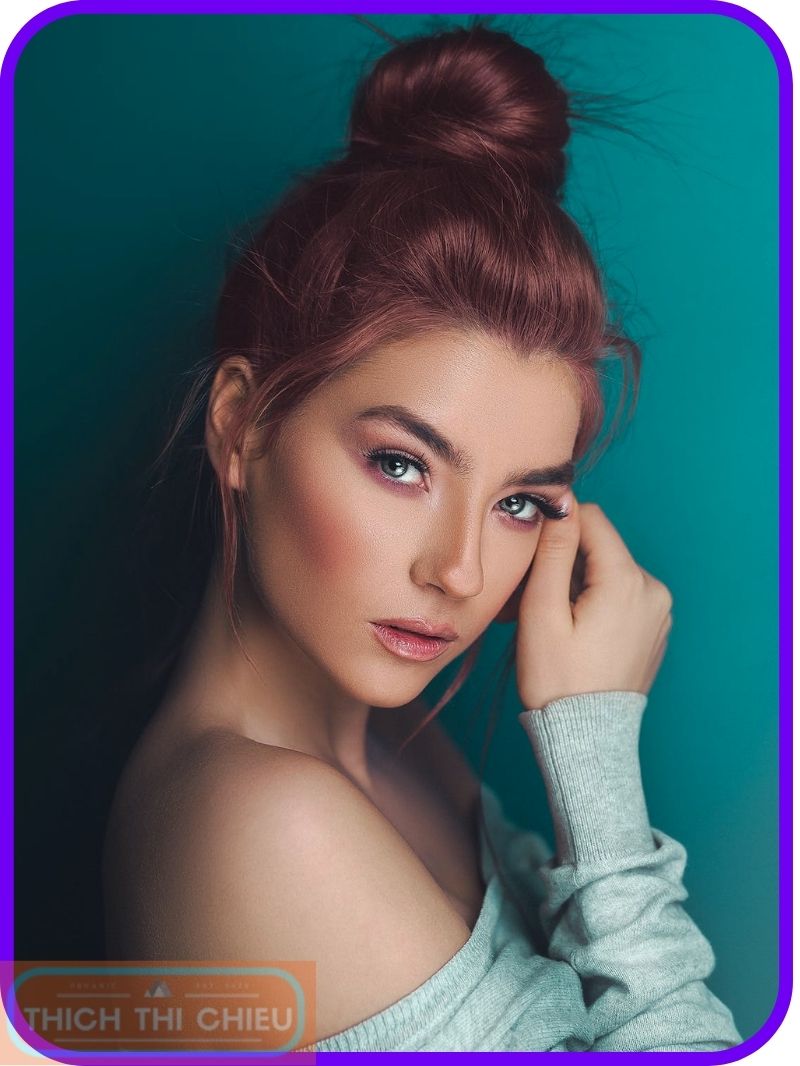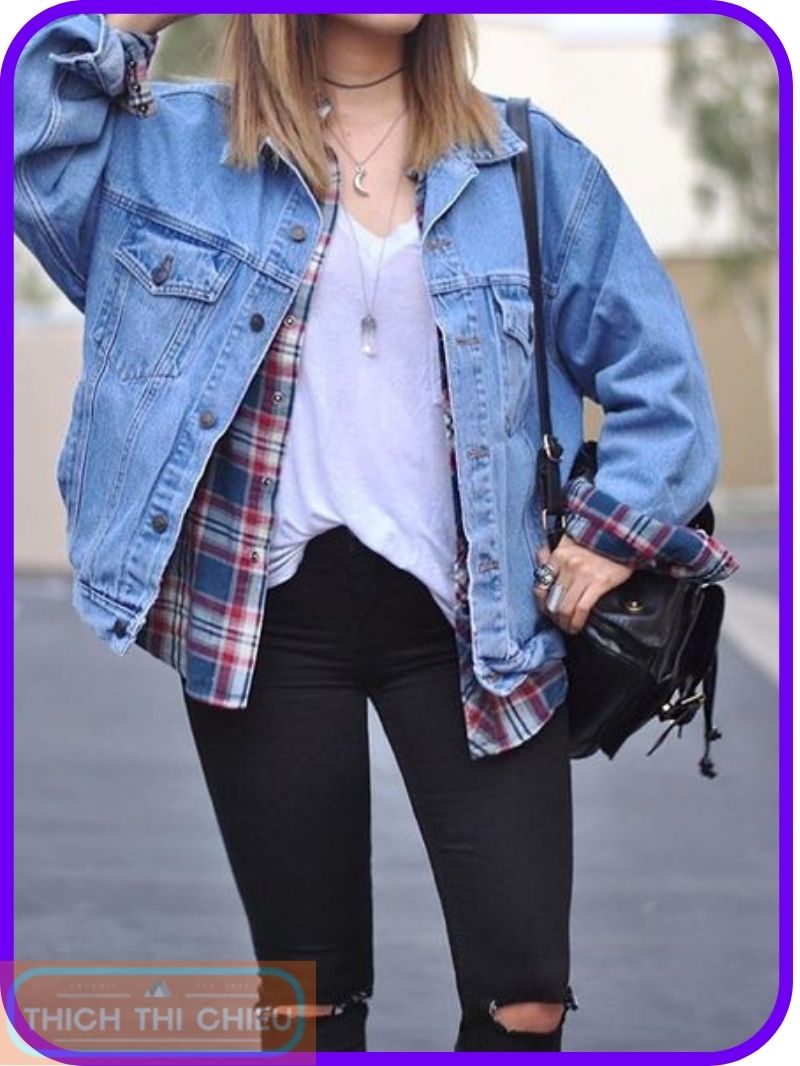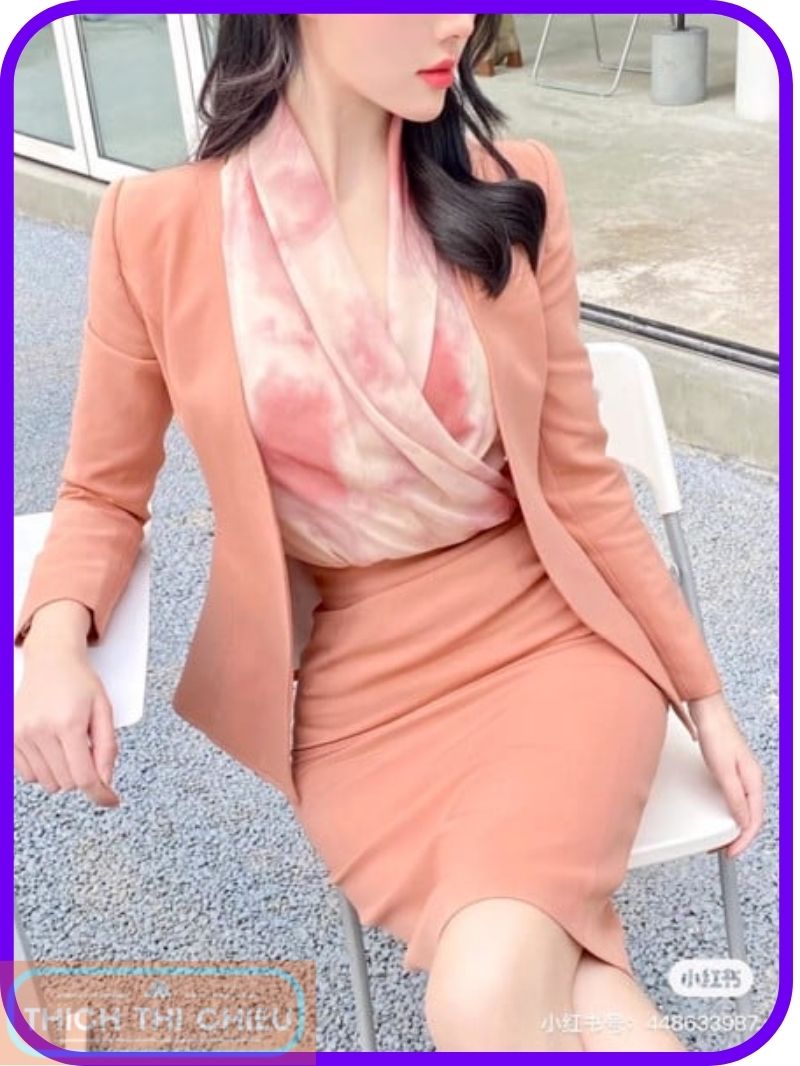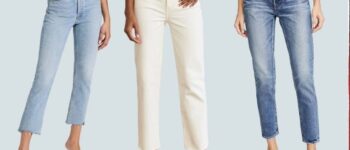The color wheel is a visual representation of the relationships between colors. It is a helpful tool for artists, designers, and fashionistas alike, as it can help you to create harmonious color schemes and to understand how different colors will interact when placed next to each other.
What is the color wheel?
The color wheel is divided into 12 main colors:
- Primary colors: Red, yellow, and blue
- Secondary colors: Orange, green, and purple
- Tertiary colors: Yellow-orange, red-orange, red-purple, blue-purple, blue-green, and yellow-green
Primary colors are the purest colors and cannot be created by mixing other colors. Secondary colors are created by mixing two primary colors together. Tertiary colors are created by mixing a primary color with a secondary color.
Why is it important to understand the color wheel?
Understanding the color wheel can help you to create more stylish and visually appealing outfits. It can also help you to choose colors that flatter your skin tone and that are appropriate for different occasions.
For example, if you know that complementary colors create a bold and eye-catching contrast, you can use this knowledge to create an outfit that is sure to turn heads. Or, if you know that analogous colors create a harmonious and calming look, you can use this knowledge to create an outfit that is perfect for a job interview or a special event.
What are the different types of color schemes?
There are many different color schemes that you can use when mixing and matching clothes. Some of the most popular color schemes include:
- Complementary colors: Complementary colors are colors that are opposite each other on the color wheel. They create a bold and eye-catching contrast when placed next to each other. Some examples of complementary colors include:
- Red and green
- Blue and orange
- Yellow and purple
- Analogous colors: Analogous colors are colors that are next to each other on the color wheel. They create a harmonious and calming look when placed next to each other. Some examples of analogous colors include:
- Blue, green, and teal
- Yellow, orange, and red
- Purple, blue, and violet
- Triadic colors: Triadic colors are three colors that are evenly spaced on the color wheel. They create a dynamic and balanced look when placed next to each other. Some examples of triadic colors include:
- Red, yellow, and blue
- Orange, green, and purple
- Blue-violet, yellow-orange, and red-green
I recommend that you read this article to learn more about the color wheel and how to use it to mix and match colors in your clothes. I hope you find it helpful!
Primary, secondary, and tertiary colors
What are primary colors?
Primary colors are the purest colors and cannot be created by mixing other colors. The three primary colors are red, yellow, and blue.
What are secondary colors?
Secondary colors are created by mixing two primary colors together. The three secondary colors are orange, green, and purple.
What are tertiary colors?
Tertiary colors are created by mixing a primary color with a secondary color. The six tertiary colors are yellow-orange, red-orange, red-purple, blue-purple, blue-green, and yellow-green.
The following table shows the relationships between primary, secondary, and tertiary colors:
| Primary color | Secondary color | Tertiary color |
| Red | Orange | Red-orange, yellow-orange |
| Yellow | Green | Yellow-green, blue-green |
| Blue | Purple | Blue-purple, red-purple |
Examples
Here are some examples of primary, secondary, and tertiary colors:
- Primary colors:
- Red: blood, fire, tomatoes
- Yellow: sunshine, lemons, bananas
- Blue: the sky, the ocean, blueberries
- Secondary colors:
- Orange: pumpkins, carrots, sunsets
- Green: grass, leaves, frogs
- Purple: grapes, plums, lavender
- Tertiary colors:
- Yellow-orange: amber, marigolds, peaches
- Red-orange: terracotta, cayenne pepper, rust
- Red-purple: magenta, raspberries, cranberries
- Blue-purple: indigo, violets, plums
- Blue-green: turquoise, teal, jade
- Yellow-green: lime green, olive green, chartreuse
Color schemes
Complementary colors
Complementary colors are colors that are opposite each other on the color wheel. They create a bold and eye-catching contrast when placed next to each other. Some examples of complementary colors include:
- Red and green
- Blue and orange
- Yellow and purple
Complementary color schemes can be used to create a variety of different effects, from fun and playful to sophisticated and elegant. For example, you could wear a red dress with green accessories to create a festive holiday look, or you could pair a blue shirt with orange pants for a more casual and laid-back outfit.
Analogous colors
Analogous colors are colors that are next to each other on the color wheel. They create a harmonious and calming look when placed next to each other. Some examples of analogous colors include:
- Blue, green, and teal
- Yellow, orange, and red
- Purple, blue, and violet
Analogous color schemes are a great choice for people who want to create a cohesive and polished look. They can be used for both formal and casual occasions. For example, you could wear a blue suit with a green tie for a job interview, or you could pair a yellow top with orange jeans for a day out with friends.
Triadic colors
Triadic colors are three colors that are evenly spaced on the color wheel. They create a dynamic and balanced look when placed next to each other. Some examples of triadic colors include:
- Red, yellow, and blue
- Orange, green, and purple
- Blue-violet, yellow-orange, and red-green
Triadic color schemes can be used to create a variety of different effects, from fun and vibrant to elegant and sophisticated. For example, you could wear a red dress with yellow accessories and blue shoes for a bold and eye-catching outfit, or you could pair an orange shirt with green pants and purple shoes for a more unique and stylish look.
How to choose a color scheme
When choosing a color scheme, it is important to consider your skin tone and the occasion. For example, if you have a cool skin tone, you may want to choose colors with blue or purple undertones. If you have a warm skin tone, you may want to choose colors with yellow or orange undertones.
You should also consider the occasion when choosing a color scheme. For example, if you are dressing for a job interview, you may want to choose more conservative colors. If you are dressing for a night out, you may want to choose more fun and vibrant colors.
How to mix and match colors in your clothes
Consider your skin tone
When mixing and matching colors in your clothes, it is important to consider your skin tone. Some colors will look better on your skin tone than others. If you have a cool skin tone, you may want to choose colors with blue or purple undertones. If you have a warm skin tone, you may want to choose colors with yellow or orange undertones.
Here are some tips for choosing colors that flatter your skin tone:
- Cool skin tones: If you have a cool skin tone, you may want to choose blue, green, purple, and pink hues. You may also want to choose colors with silver or gray undertones.
- Warm skin tones: If you have a warm skin tone, you may want to choose yellow, orange, red, and brown hues. You may also want to choose colors with gold or beige undertones.
Think about the occasion
Another important factor to consider when mixing and matching colors is the occasion. Are you dressing for a job interview, a night out, or a casual day at the beach? Different occasions call for different color palettes.
For example, you might want to choose more conservative colors for a job interview and more fun and vibrant colors for a night out. You might also want to choose lighter colors for summer and darker colors for winter.
Don’t be afraid to experiment
The best way to learn how to mix and match colors in your clothes is to experiment. Try different color combinations and see what looks good to you. Don’t be afraid to mix and match complementary, analogous, and triadic colors.
Tips for mixing and matching colors in your clothes
Start with a neutral base
Neutral colors like black, white, and gray are a great way to start building an outfit. They can be paired with any other color and they always look polished.
Here are some examples of neutral-colored pieces that you can add to your wardrobe:
- A black blazer
- A white button-down shirt
- A pair of gray jeans
- A black skirt
- A beige trench coat
Add a pop of color with accessories
If you’re not sure how to mix and match colors, start by adding a pop of color with your accessories. For example, you could wear a brightly colored scarf, necklace, or pair of shoes.
Here are some examples of colorful accessories that you can add to your outfits:
- A red scarf
- A blue necklace
- A pair of yellow shoes
- A purple handbag
- A green belt
Use a color wheel
A color wheel can be a helpful tool for mixing and matching colors. It can help you to identify complementary, analogous, and triadic colors.
- Complementary colors are colors that are opposite each other on the color wheel. They create a bold and eye-catching contrast when placed next to each other. Some examples of complementary colors include:
- Red and green
- Blue and orange
- Yellow and purple
- Analogous colors are colors that are next to each other on the color wheel. They create a harmonious and calming look when placed next to each other. Some examples of analogous colors include:
- Blue, green, and teal
- Yellow, orange, and red
- Purple, blue, and violet
- Triadic colors are three colors that are evenly spaced on the color wheel. They create a dynamic and balanced look when placed next to each other. Some examples of triadic colors include:
- Red, yellow, and blue
- Orange, green, and purple
- Blue-violet, yellow-orange, and red-green
- Other popular color combinations:
- Black and white
- Black and navy
- Brown and khaki
- Gray and black
- Cream and navy
- Pink and gray
You can also use these colors as a starting point to create your own unique color combinations. For example, you could try pairing a light blue shirt with a pair of dark green pants, or a yellow top with a pair of purple jeans.
How to create a stylish outfit using the color wheel
The color wheel is a great tool for creating stylish outfits. By understanding the different types of color schemes and how to use them, you can create looks that are both eye-catching and harmonious.
Choose a color scheme
The first step to creating a stylish outfit using the color wheel is to choose a color scheme. There are many different color schemes to choose from, but some of the most popular include:
- Complementary color scheme: Complementary colors are colors that are opposite each other on the color wheel. They create a bold and eye-catching contrast when placed next to each other. Some examples of complementary colors include red and green, blue and orange, and yellow and purple.
- Analogous color scheme: Analogous colors are colors that are next to each other on the color wheel. They create a harmonious and calming look when placed next to each other. Some examples of analogous colors include blue, green, and teal, yellow, orange, and red, and purple, blue, and violet.
- Triadic color scheme: Triadic colors are three colors that are evenly spaced on the color wheel. They create a dynamic and balanced look when placed next to each other. Some examples of triadic colors include red, yellow, and blue, orange, green, and purple, and blue-violet, yellow-orange, and red-green.
Choose the right pieces
Once you have chosen a color scheme, it is time to choose the right pieces for your outfit. When choosing pieces, it is important to consider your body type and personal style.
For example, if you have a pear-shaped figure, you may want to choose a top in a lighter color and a bottom in a darker color to balance out your proportions. If you have a classic personal style, you may want to stick to neutral colors and clean lines.
Consider the proportions of your outfit
When putting together your outfit, it is important to consider the proportions. You don’t want to wear too much of one color and not enough of another.
For example, if you are wearing a bold colored top, you may want to pair it with neutral-colored bottoms. If you are wearing a patterned skirt, you may want to pair it with a solid-colored top.
Add the finishing touches
Once you have chosen your clothes, it is time to add the finishing touches with your shoes, jewelry, and accessories.
When choosing accessories, it is important to keep the overall balance of your outfit in mind. If you are wearing a bold and colorful outfit, you may want to choose more understated accessories. If you are wearing a more neutral outfit, you may want to add a pop of color with your accessories.
How to dress for different occasions
How to dress for different occasions depends on the formality of the event, the time of day, and the weather. Here are some general tips:
- Formal events: For formal events, such as weddings, galas, and black tie events, it is best to dress in your best clothes. This could include a suit and tie for men and a dress or skirt and blouse for women.
- Semi-formal events: Semi-formal events, such as cocktail parties and work dinners, call for less formal attire. For men, this could include a blazer and chinos or a dress shirt and jeans. For women, this could include a cocktail dress or a dressy skirt and blouse.
- Casual events: For casual events, such as barbecues, picnics, and running errands, you can dress more comfortably. For men, this could include a t-shirt, shorts, and sneakers. For women, this could include a sundress, jeans, and sandals.
If you are unsure of what to wear, it is always better to err on the side of caution and dress more formally. You can always ask the host of the event what the dress code is.
Here are some additional tips for dressing for different occasions:
- Consider your body type. When choosing clothes, it is important to consider your body type and what looks best on you. For example, if you have a pear-shaped figure, you may want to choose clothes that accentuate your waist and balance out your hips.
- Pay attention to the details. The right accessories can really elevate your outfit. For example, a statement necklace or a pair of earrings can add a touch of glamour to a simple dress.
- Be comfortable. It is important to choose clothes that you feel comfortable in. If you are not comfortable in your clothes, you will not be able to project confidence.
With a little planning, you can easily dress for any occasion.
How to accessorize
Accessories are a great way to add personality and style to your outfit. They can also be used to balance out your proportions or to highlight your best features.
Here are some tips on how to accessorize:
- Choose the right accessories for the occasion. If you are dressing for a job interview, you may want to choose more understated accessories. If you are dressing for a night out, you may want to choose more flashy and eye-catching accessories.
- Consider your body type. When choosing accessories, it is important to consider your body type. For example, if you have a small frame, you may want to choose smaller accessories. If you have a larger frame, you can choose larger accessories.
- Don’t be afraid to experiment. There are no hard and fast rules when it comes to accessorizing. The best way to learn how to accessorize is to experiment and see what works best for you.
Here are some specific accessory ideas:
- Jewelry: Jewelry is a great way to add a touch of glamour to your outfit. You can choose necklaces, earrings, bracelets, and rings in a variety of styles and materials.
- Scarves: Scarves are a versatile accessory that can be worn in a variety of ways. You can wear them around your neck, tie them in your hair, or even use them as a belt.
- Hats: Hats are a great way to protect yourself from the sun and to add a touch of style to your outfit. You can choose from a variety of styles, including baseball caps, sun hats, and fedoras.
- Belts: Belts can be used to cinch in your waist and to add a touch of style to your outfit. You can choose from a variety of styles, including leather belts, fabric belts, and even belts with decorative buckles.
- Handbags: Handbags are a practical accessory that can be used to carry your essentials. You can choose from a variety of styles, including tote bags, crossbody bags, and clutches.
When accessorizing, it is important to keep the overall balance of your outfit in mind. You don’t want to overdo it or underdo it. A few well-chosen accessories can go a long way.
Here are some additional tips for accessorizing:
- Choose a focal point. When accessorizing, it is helpful to choose a focal point. This could be a statement necklace, a pair of earrings, or a scarf. Once you have chosen a focal point, build the rest of your accessories around it.
- Mix and match metals. It is okay to mix and match different metals when accessorizing. For example, you could wear a gold necklace with silver earrings.
- Don’t be afraid to mix and match patterns. You can also mix and match different patterns when accessorizing. For example, you could wear a striped shirt with a polka dot scarf.
- Keep it simple. If you are unsure of how to accessorize, it is always better to keep it simple. A few well-chosen accessories are better than a lot of mismatched accessories.
Conclusion
Summary of the key points
- The color wheel is a visual representation of the relationships between colors. It is a helpful tool for artists, designers, and fashionistas alike, as it can help you to create harmonious color schemes and to understand how different colors will interact when placed next to each other.
- There are many different color schemes that you can use when mixing and matching clothes. Some of the most popular color schemes include complementary colors, analogous colors, and triadic colors.
- When choosing a color scheme for your outfit, it is important to consider your skin tone and the occasion. You should also consider the proportions of your outfit and the details, such as the accessories you choose.
Tips for using the color wheel to create stylish outfits
- Start with a neutral base. Neutral colors like black, white, and gray are a great way to start building an outfit. They can be paired with any other color and they always look polished.
- Add a pop of color with accessories. If you’re not sure how to mix and match colors, start by adding a pop of color with your accessories. For example, you could wear a brightly colored scarf, necklace, or pair of shoes.
- Use a color wheel. A color wheel can be a helpful tool for mixing and matching colors. It can help you to identify complementary, analogous, and triadic colors.
- Don’t be afraid to experiment. The best way to learn how to mix and match colors is to experiment. Try different color combinations and see what looks good to you.
By following these tips, you can learn how to mix and match colors in your clothes to create stylish and unique outfits. The color wheel is a great tool to help you get started, but don’t be afraid to experiment and find what works best for you. Have fun and be creative!







Leave a Reply